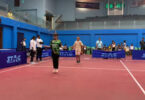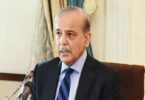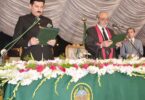Monitoring Desk
LONDON: When multidisciplinary artist Firouz Farmanfarmaian went into lockdown at his studio in Marbella, Spain, in March, he didn’t realize his time in confinement would be a period of intense creativity leading to his first ever participation in a VR exhibition.
Prior to isolation, Farmanfarmaian spent six months in the Draa Valley in South Morocco, working closely with local Amazigh artisans and painting in the deserted streets of abandoned ‘ghost’ villages — once populated by Berbers and, further back, by Jews.
He told Arab News that the first few days in confinement after his time in the wide open spaces of the Draa Valley had been “pretty brutal.” Then, out of the blue, a phone exchange with his agent Janet Rady led to the launch of a collaborative multi-platform digital exhibition available across Artsy, the Janet Rady Fine Arts (JRFA) website, Nouvelle Vague Artspaces, Kunsmatrix VR exhibition and Instagram.
“Let’s Get Lost (Let Them Send Out Alarms),” which runs until May 13, features art that Farmanfarmaian created using only materials immediately on hand in his studio. In part this was due to the logistical restrictions of the lockdown, but it was also a result of his admiration for the concept of ‘junkspace’ defined by the Dutch architect Rem Koolhaas as “what remains after modernization has run its course or, more precisely, what coagulates while modernization is in progress, its fallout.”
Farmanfarmaian worked with companies in the industrial area of Marbella where his studio is based, taking delivery of their unused materials and repurposing them for his art.
“I used industrial glue on wood and acrylic markers and plastic paint with a lot of texturization,” he said. “We are living through dark times so I logically went towards a darker type of palette which reflects the reality that people are dying in this plague and the mood I am in right now.” The muted colors also reflect the desert landscapes he was working in before the lockdown.
Farmanfarmaian also used an oval shape as a motif in his work for the first time. A departure from the triangle and cosmic cross that feature prominently in his preceding work. “When I used the triangle and cosmic cross they would be shown with an encasing. I slowly started in this series to move forward into this new form, in which the triangle and cross have disappeared and only the encasing, which had originally been created just to give them perspective, stayed,” he explained.
There is a strong architectural feel to Farmanfarmaian’s work, a legacy of his grandfather, the pioneering architect Abdul Aziz Farmanfarmaian, whose extensive legacy includes high-profile projects in Saudi Arabia where he worked after the Iranian revolution. Although Farmanfarmaian studied architecture, he did not follow his grandfather into the profession. After three years he chose to switch to studying graphic design, but he recognizes “there is an element of architectonics in my work.”
In his work, you sense Farmanfarmaian searching for his lost roots. He left Iran aged four when his family moved to Spain because of the revolution. He was largely educated in Paris, under the guidance of his grandfather. He is also powerfully influenced by the concept of ‘trace,’ as espoused by the late French philosopher Edouard Glissant.
“His idea was that the archaic cultures and memory have to be revisited and put forward again in order for to us to communicate better today,” Farmanfarmaian said
This philosophy influenced his post-tribal exhibition “Memorandum of the Unknown Path,” a powerful site-specific installation in the main halls of the Théâtre Royal de Marrakech for the 1-54 Marrakech 2020 African art fair. This work is currently going through the qualification process for the Jameel Prize, echoing the footsteps of his late great aunt, the celebrated artist Monir Shahroudy Farmanfarmaian, who was a finalist in 2011.
For Farmanfarmaian, the coronavirus has meant isolation but also intense creativity and exploration of new ways of communicating. He believes it is the responsibility of artists to give hope in times of darkness.
“We are adaptive creatures and every situation can also be a blessing,” he said.
Courtesy: (Arabnews)






